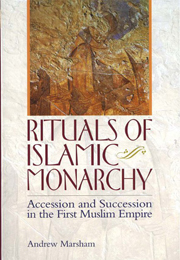Book contents
- Frontmatter
- Contents
- List of maps and figures
- Acknowledgements
- Map 1
- Map 2
- Map 3
- INTRODUCTION
- PART I LATE ANTIQUE ARABIA AND EARLY ISLAM (c. 550–c. 660)
- PART II THE UMAYYAD CALIPHATE (c. 660–750)
- PART III THE EARLY ABBASID CALIPHATE (c. 750–809)
- PART IV THE MIDDLE ABBASID CALIPHATE (809–865)
- INTRODUCTION
- 13 FROM THE CIVIL WAR TO SAMARRA (809–847)
- 14 CALIPHATE OF AL-MUTAWAKKIL (847–861)
- 15 THE OUTBREAK OF THE SECOND NINTH-CENTURY CIVIL WAR (861–865)
- 16 ABBASID DOCUMENTS FOR CALIPHAL ACCESSION
- CONCLUSION
- Genealogical table of Quraysh
- Genealogical table of the Abbasid caliphs
- Bibliography
- Index
16 - ABBASID DOCUMENTS FOR CALIPHAL ACCESSION
from PART IV - THE MIDDLE ABBASID CALIPHATE (809–865)
Published online by Cambridge University Press: 05 September 2013
- Frontmatter
- Contents
- List of maps and figures
- Acknowledgements
- Map 1
- Map 2
- Map 3
- INTRODUCTION
- PART I LATE ANTIQUE ARABIA AND EARLY ISLAM (c. 550–c. 660)
- PART II THE UMAYYAD CALIPHATE (c. 660–750)
- PART III THE EARLY ABBASID CALIPHATE (c. 750–809)
- PART IV THE MIDDLE ABBASID CALIPHATE (809–865)
- INTRODUCTION
- 13 FROM THE CIVIL WAR TO SAMARRA (809–847)
- 14 CALIPHATE OF AL-MUTAWAKKIL (847–861)
- 15 THE OUTBREAK OF THE SECOND NINTH-CENTURY CIVIL WAR (861–865)
- 16 ABBASID DOCUMENTS FOR CALIPHAL ACCESSION
- CONCLUSION
- Genealogical table of Quraysh
- Genealogical table of the Abbasid caliphs
- Bibliography
- Index
Summary
Al-Ṭabarī's accounts of al-Muntaṣir's coup in 861 and of the outbreak of civil war in 865 include the first two complete, extant copies of documents said to have been written for the accessions of specific caliphs. The first is said to have been composed for the accession of al-Muntaṣir in December 861 (‘I’), the second for the accession of his brother al-Muctazz (and the succession of al-Muɔayyad) in February 865 (‘II’). As with other such copies of documents, certainty about the provenance and authenticity of the text is impossible, but the proximity of al-Ṭabarī to the original composition, and the numerous parallels with other similar products of the Abbasid dīwān, inspire some confidence in the documents.
Sacīd b. Ḥumayd, the chief scribe of al-Muntaṣir's vizier, Ahmad b. al-Khaṣīb, is the most likely author of the first document. Sacīd was not exiled with his master after the accession of al-Mustacīn, and, after the fall of Utamīsh, he became the head of the chancery (ṣāḥib dīwān al-rasāɔil). If Sacīd did not flee to Baghdad with the caliph in February 865 (and other Iranian and Arab officials and commanders fled to Baghdad later), then the second document, which is almost identical to the first, was probably also composed by him. Alternatively, the second document may have been copied from the dīwān at Samarra by someone else, or – less likely – one or other of the texts may be a fictitious copy of its parallel.
- Type
- Chapter
- Information
- Rituals of Islamic MonarchyAccession and Succession in the First Muslim Empire, pp. 294 - 308Publisher: Edinburgh University PressPrint publication year: 2009



